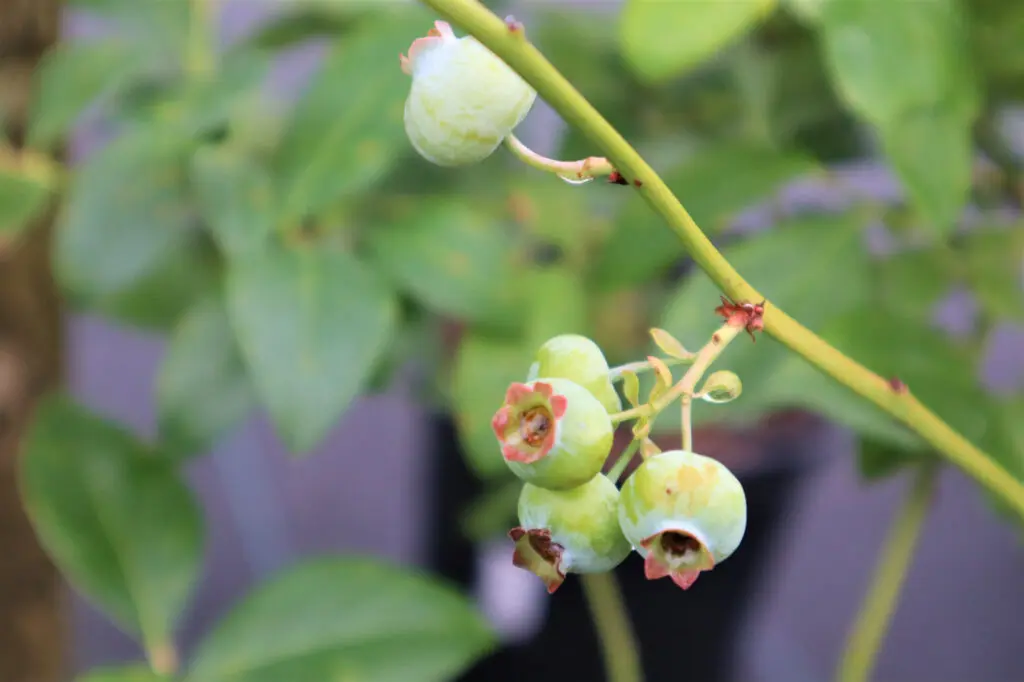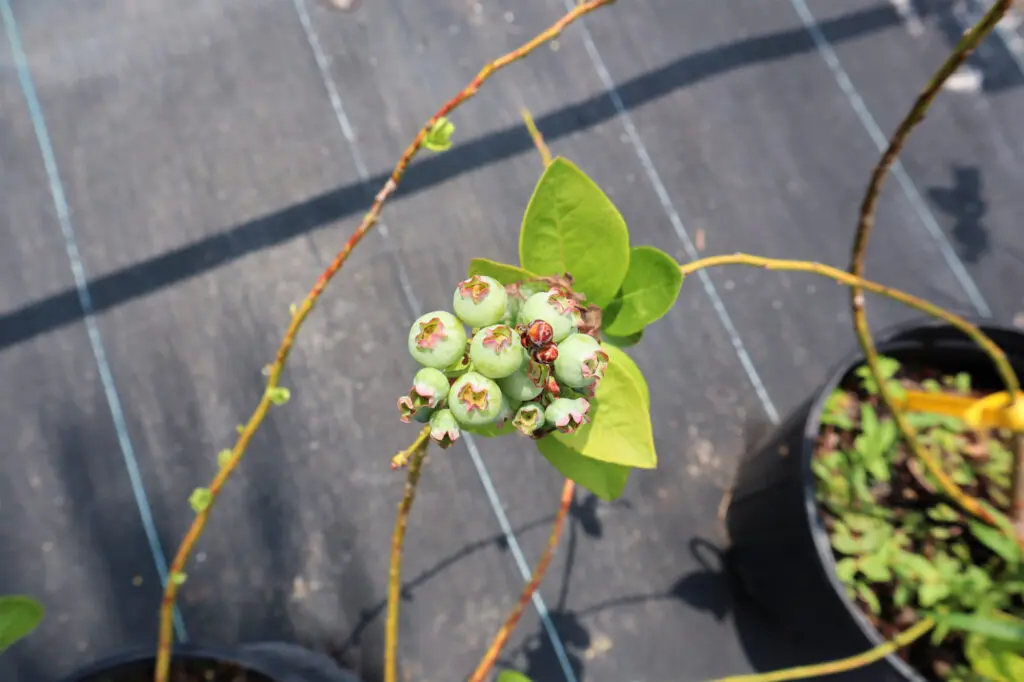by Amanda Rose Newton
With the Fourth of July kicking off the week, the colors of the flag are still fresh on our minds and present in our décor.

Blueberries, which are a must for any summertime picnic spread, are another native to the United States with an interesting, overlooked history.
For the record, blueberries are one of the ONLY true botanical berries bearing the common name. Most of the berries at the grocery store are botanical imposters, including last week’s focal fruit, the blackberry.
Vaccinium, the plant genus that includes blueberries, has over 450 members including other native favorites like huckleberries, cranberries, azaleas, rhododendron, and mountain laurel.

Our Gardening Info Specialist Steve has acquired an encyclopedia (or 12) of knowledge on the anthropology, ethnobotany, and origins of many important-to-us plant species. Steve mentions that bears beat us to blueberry appreciation, with evidence suggesting that they are willing to travel ten to fifteen miles on an empty stomach for blueberries when they are in season! Clearly, the bears are aware that once the season hits, there really is nothing that can beat fresh-picked blueberries.
Native Americans also recognized how versatile the common blueberry can be. They dried them for use in soups, powdered them to make jerky, and used them in medicinal teas. The juice was used to relieve coughs and of course, the beautiful hue made an excellent natural dye.
Pilgrims were taught how to gather blueberries and store them for the sparse winter months. As we know, blueberries dry and freeze well. Blueberries make awesome jam and can be canned easily. Today, blueberries are labeled as a “superfood” due to the robust amounts of antioxidants with many health benefits on top of being delicious.
Florida is still holding on to the title of being in the top 5 blueberry producers in the USA. One of my favorite pastimes is looking where the blueberries are from at the grocery store, as it will tell you a lot about how the season runs and looks differently throughout the USA. Our season here runs from April 1- May 15th.
Growing Blueberries in Florida
Healthy blueberries need healthy soil! Blueberries like it on the acidic side, with the pH hitting about 5 ideally. Coarse-textured soil is key, as it stays moist but does not hold on to water which could cause rot.
The best blends will include pine, a natural pH reducer, and compost or soil conditioner. Since blueberries have shallow roots, this is one you can plant in containers if space is a concern. Just be sure to plant it at the level it was in the pot no matter if in-ground or container.

For spacing, five or six feet apart should be fine as blueberries can take a bit of crowding. You can expect your blueberry to start producing fruit in the second or third year of planting– perfect for those of us who are impatient.
Maintaining Your Blueberry Plants
Blueberries need watering once a day the first week they are planted, then you can taper off a day for each week following until you hit twice a week. If your berry is in a container, you might want to play it by ear and water when the top few inches of the soil are dry as moisture will wick away quicker than in the ground.
It should be noted that blueberries are not salt fans, so be sure you do not have salt intrusion before watering.
Blueberries usually develop mycorrhizal fungi on their own if planted in the ground, and shouldn’t require fertilization. However, if you feel your production is weak or it is planted in a container, Espoma Holly-Tone contains a natural pH reducer as well as nutrients to help your berries take off.
Remember, blueberries are a small plant, so a small handful of fertilizer is all you need– twice a year if that. To up your production game, consider getting a few blueberries to increase the pollination rate.
Choose 2 or more cultivars you enjoy and watch your bounty grow! As a bonus, different cultivars ripen at different times, offering an extended season.
When pruning blueberry bushes, remember that fruiting happens on the previous year’s growth, and the berries for next year form in late summer here in Florida.
Pruning can be done anytime post-harvest, with the optimal months being January and February. To keep mature plants strong producers, cut out a few weakened old canes and late-season growth at the base.
Be careful not to cut away more than half of the newest growth, which is a good tip to keep in mind when pruning any plant. While pruning is intimidating at first, it makes a huge difference in future production rates.
Blueberry Varieties
While subtle, there are taste and size differences that vary by cultivar. We highly recommend planting several to get a feel for what you enjoy in a blueberry as everyone’s tastes are unique.
The berries grown in Florida are Southern Highbush and are distinct from the blueberries you would find up North.
Abundance: Large, true-blue fruit with a sweet flavor. Grows vigorously and is highly productive.
Emerald: The emerald has a slightly longer harvest of 4 to 6 weeks, with very large, deep blue-colored fruit that is mild in taste. Vigorous and spreading, it can carry heavy crops of berries.
Jewel: With a later harvest time than the rest, the fruit is large, medium blue, and firm. If you like tangy blueberries, this one is less sweet and more sour.
Sapphire: An attractive upright and vigorous grower, it requires more pruning than the rest. Slow but steady, the flavor is excellent and worth the wait.
Sharpblue: This is a great beginner blueberry! Fruit is like what you would get at the grocery store, just tastier. It is incredibly adaptable to most yards or containers and the foliage is as well. Harvest is at the end of the season, making it a great cultivar to mix with another.
Rabbiteye ‘Pink Lemonade’: If you are looking for something less “blue”, rabbiteye has a pink cultivar! The size of the berries is a little smaller, but worth it for those who want to be different.
Florida Native Blueberry Varieties:
Darrow’s Blueberry (Vaccinium darrowii)
Shiny Blueberry (Vaccinium myrsinites)
Florida has its own pair of native blueberries that love our sandy soil and offer attractive foliage for the landscape.
The blueberries are tiny but delicious! For those seeking something smaller, these two only get about 2 feet tall, whereas the above cultivars hit about 4 feet.
The pink bell-shaped flowers they make bring cheer to the Spring landscape and the berries are perfectly sized for young gardeners who want to help with the harvest.


